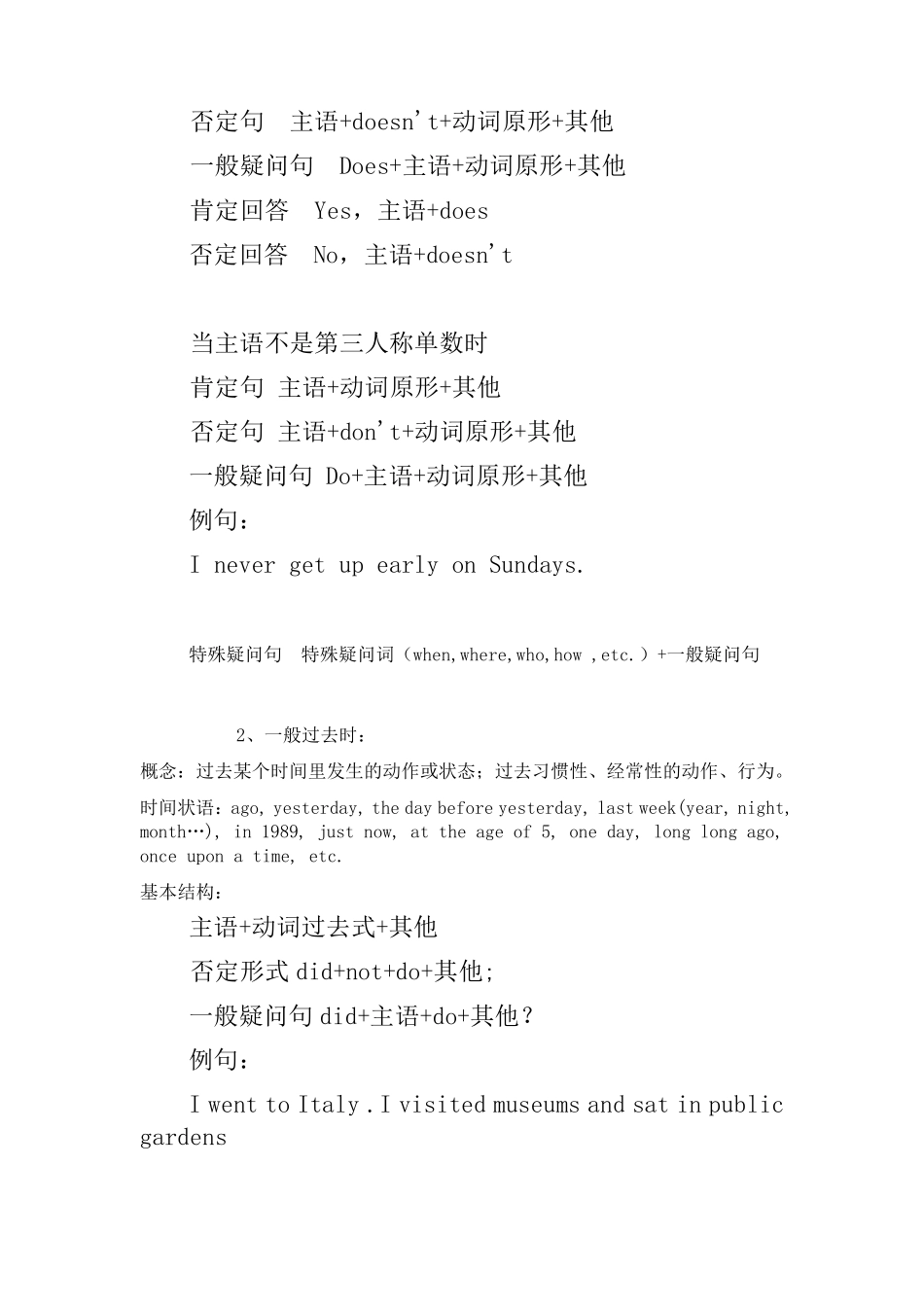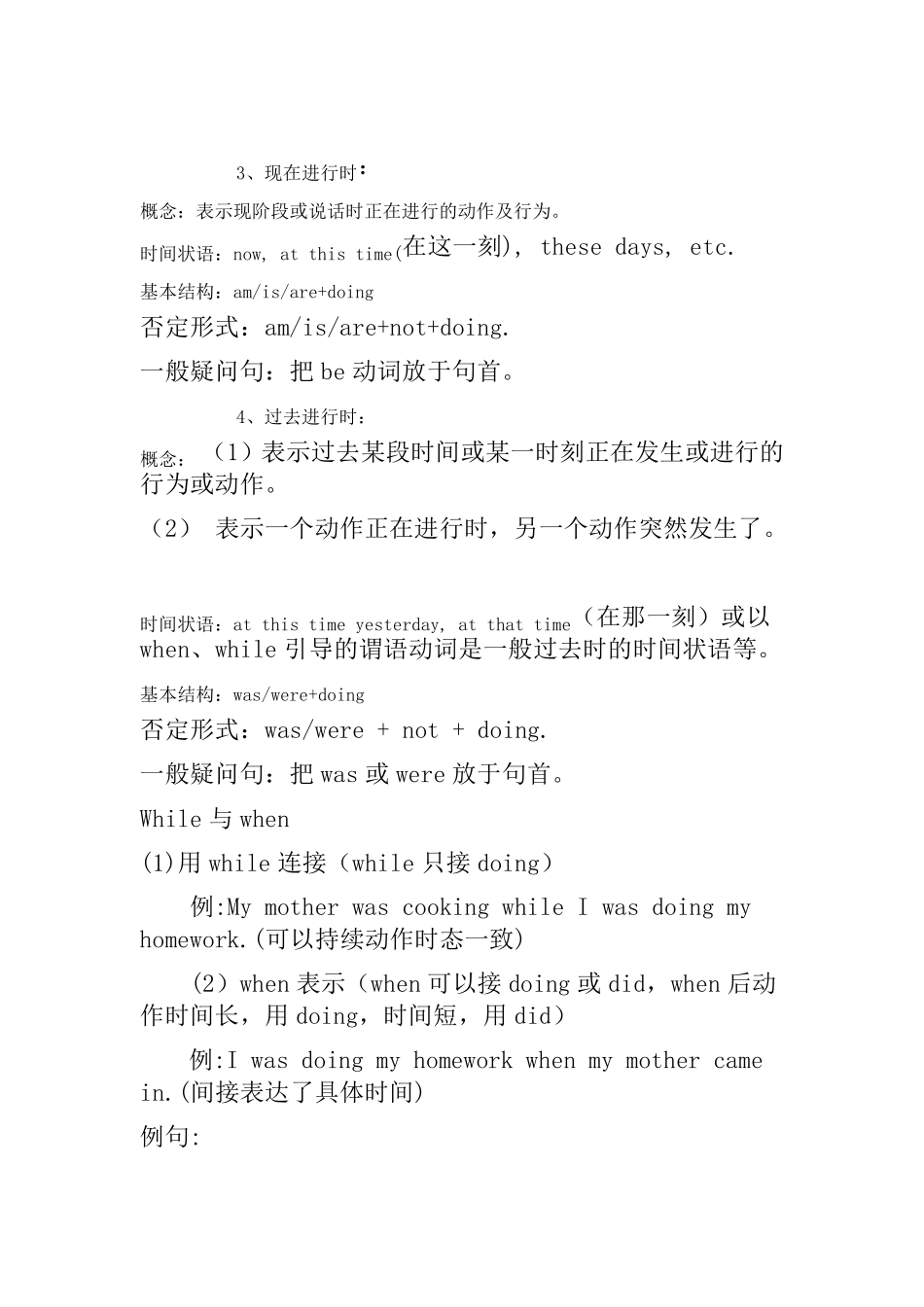初中英语八种时态归纳 时态是英语学习中一个至关重要的内容,广大初中学生在实际运用时,往往对时态总是倍感棘手,下面我们就归纳复习一下这几种时态。 1、一般现在时:概念:经常、反复发生的动作或行为及现在的某种状况。 时间状语: Always(总是), usually(通常), often(经常), sometimes(有时候), every week (day, year, month…), once a week, on Sundays ,etc. 基本结构: 当主语是第三人称单数时 肯定句 主语+动词单三+其他 否定句 主语+doesn't+动词原形+其他 一般疑问句 Does+主语+动词原形+其他 肯定回答 Yes,主语+does 否定回答 No,主语+doesn't 当主语不是第三人称单数时 肯定句 主语+动词原形+其他 否定句 主语+don't+动词原形+其他 一般疑问句 Do+主语+动词原形+其他 例句: I never get up early on Sundays. 特殊疑问句 特殊疑问词(when,where,who,how ,etc.)+一般疑问句 2、一般过去时: 概念:过去某个时间里发生的动作或状态;过去习惯性、经常性的动作、行为。 时间状语:ago, yesterday, the day before yesterday, last week(year, night, month…), in 1989, just now, at the age of 5, one day, long long ago, once upon a time, etc. 基本结构: 主语+动词过去式+其他 否定形式 did+not+do+其他; 一般疑问句did+主语+do+其他? 例句: I went to Italy .I visited museums and sat in public gardens 3、现在进行时: 概念:表示现阶段或说话时正在进行的动作及行为。 时间状语:now, at this time(在这一刻), these days, etc. 基本结构:am/is/are+doing 否定形式:am/is/are+not+doing. 一般疑问句:把 be 动词放于句首。 4、过去进行时: 概念: (1)表示过去某段时间或某一时刻正在发生或进行的行为或动作。 (2) 表示一个动作正在进行时,另一个动作突然发生了。 时间状语:at this time yesterday, at that time(在那一刻)或以when、while 引导的谓语动词是一般过去时的时间状语等。 基本结构:was/were+doing 否定形式:was/were + not + doing. 一般疑问句:把 was 或 were 放于句首。 While 与 when (1)用 while 连接(while 只接 doing) 例:My mother was cooking while I was doing my homework.(可以持续动作时态一致) (2)when...


